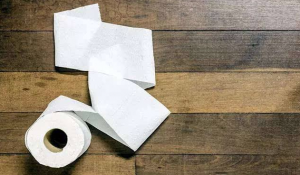
Generally speaking, there are 9 indicators for paper towel quality inspection: appearance, quantitative, whiteness, lateral liquid absorption height, lateral tensile index, average vertical and horizontal softness, holes, dustiness, microorganisms and other indicators.
1.Appearance
The appearance of toilet paper, including the appearance of packaging and paper towels. When choosing toilet paper, first check the outer packaging. The packaging seal of the product shall be neat and firm without damage; the package shall be printed with the name of the manufacturer, the date of production, the product grade (superior product, first-class product, qualified product), the adoption standard number, and the implemented hygiene standard number (GB20810 – 2006).
Secondly, check the appearance of the paper. It is clean. There are no obvious dead folds, incompleteness, breakage, hard blocks, grass bands, pulp and other paper diseases and impurities. There should be no serious hair loss or powder loss when using the paper. There should be no residual printing ink in the paper.
2.Quantitative
It means that the weight or number of sheets is not enough. According to the standard, for products with a net content of 50 grams to 100 grams, the negative deviation must not exceed 4.5 grams; for products with 200 grams to 300 grams, the tolerance must not exceed 9 grams.
3.Whiteness
Toilet paper is not as white as possible, it may be that an excessive amount of fluorescent bleach is added. Fluorescent agents are the main cause of dermatitis in women, and long-term use may cause cancer. How to tell whether there is an excessive amount of fluorescent bleach? First of all, it should be natural ivory white with the naked eye, or if the toilet paper is exposed to ultraviolet light (such as a banknote detector), if blue fluorescence appears, it is proved to contain a fluorescent agent. And if the brightness is too low, it will not affect the use of toilet paper, but it means that the raw materials used are poor, so try not to choose this kind of product.
4.Water absorption
You can put water droplets on it to see how fast it absorbs. The faster the speed, the better the water absorption.
5. Horizontal tensile index:
It’s the toughness of paper. Is it easy to crack when used. Pure wood pulp paper has long fiber, high tensile strength, good toughness, and is not easy to break.
6. Softness
This is an important indicator of toilet paper products. Good toilet paper should give people a soft and comfortable feeling. The main factors affecting the softness of toilet paper are the fiber raw material and creping process of toilet paper. Generally speaking, cotton pulp is better than wood pulp, wood pulp is better than wheat straw pulp, and toilet paper with excessive softness feels rough in use.
7. Holes
The perforation index is a limit requirement for the number of perforations on the wrinkled toilet paper. The perforations will affect the use of the paper. The wrinkle toilet paper with too many perforations not only has a poor appearance, but also easily breaks during use, affecting the wiping effect.
8.Dust degree
In simple terms, there is not much dust on the paper. If the raw material is wood pulp, the degree of dust is not a problem. However, if the recycled paper is used as a raw material and the process is not handled properly, it will be difficult to meet the dust standard.
9.Microbes
All in all, good toilet paper is generally natural milky white or ivory, with fine and uniform texture, clean paper surface, no holes, no obvious dead creases, dust, raw grass, etc., while low-grade toilet paper looks dark gray and has Impurities. Touch it with your hands, the toilet paper will lose powder, color, or even hair.